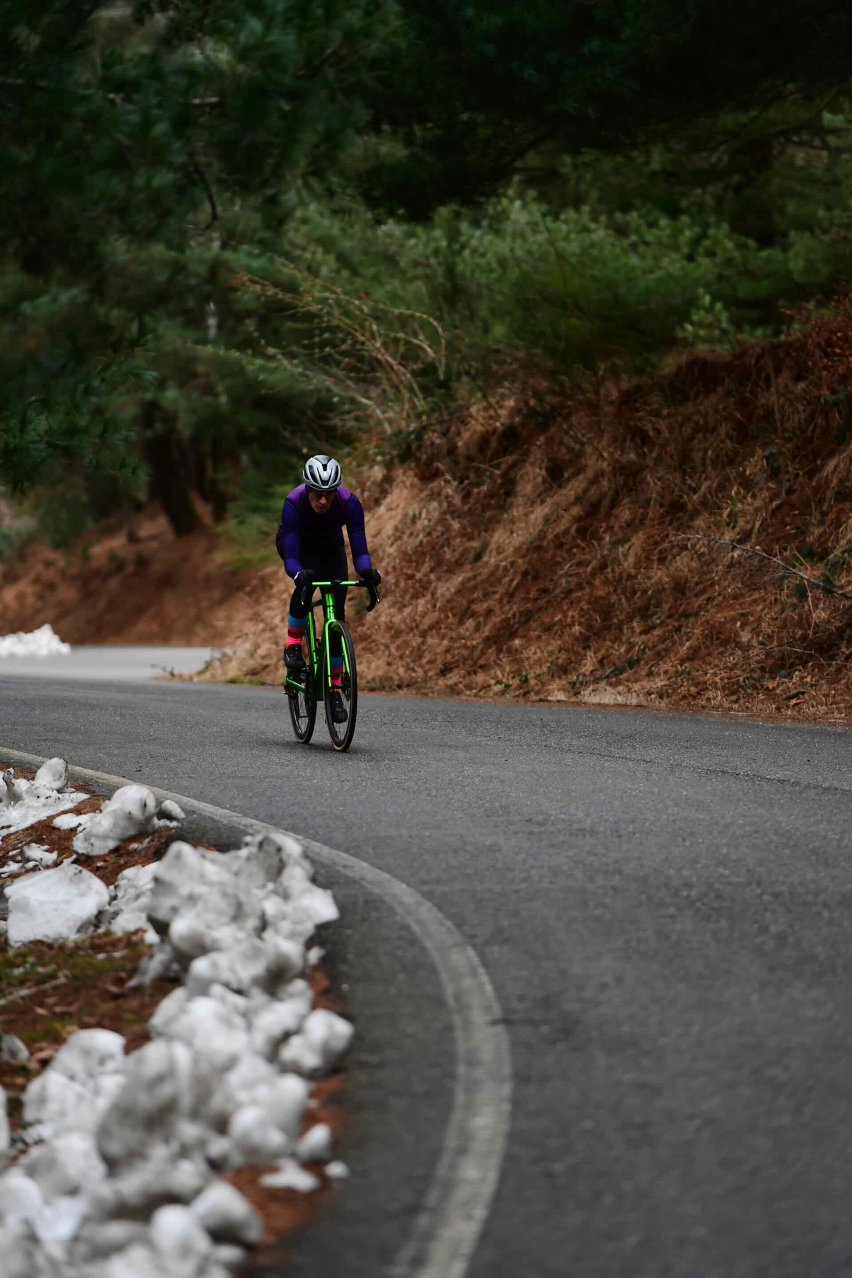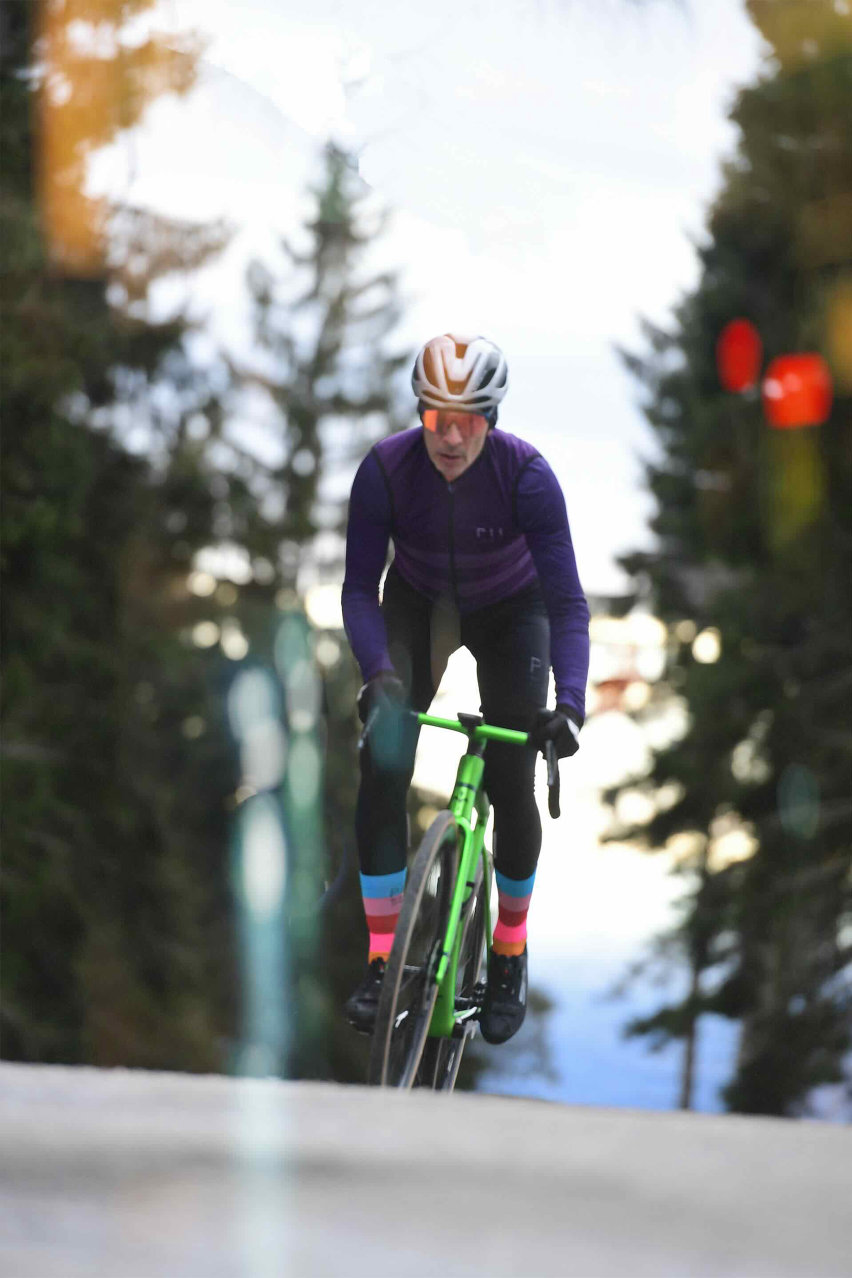By Edoardo Margiotta – Pics: Martina Folco Zambelli/HLMPHOTO
The name says it all: Verticale was born for climbing. Wilier calls it “our lightest bike ever,” at 1,626 grams for the complete kit in size M, consisting of frame, fork, handlebar and seatpost. It equates to 9.73 percent less than the Wilier 0 SRL, a model that was at the top of the range. A decidedly noteworthy achievement, enhanced by the optional Q3 Hulk Green color scheme, which sports a striking electric green with an alternating matte and gloss finish, an aesthetic virtuosity that costs 800 euros. To add to the price list, which starts at 9,900 euros and goes up to 13,400. The setup with a Sram Force AXS or Shimano Ultegra groupset, complete with Miche Kleos 36 Carbon wheels, costs 9,990 euros. It goes up to 10,400 for the Force AXS with power meter, which becomes 12,200 for the version under test, with a Shimano Dura-Ace Di2 R 9270 groupset, which mounts the rims chosen for the top end of the set-ups, namely Miche Kleos RD 36 Carbon with Ceramic Speed bearings. Shimano Dura-Ace with powermeter and RED AXS, also with power meter, are offered at 13,000 euros. At the top is, as is often the case, the Campagnolo Super Record Wireless assembly, at 13,400 euros.
Quality of materials
To improve performance and reduce weight compared to the 0 SLR, they first chose high-quality materials at Wilier, specifically carbon fiber made by Toray, the Japanese company that supplies T800, T1100 and M46JB. According to the designers, the first two are distinguished by their breaking strength, the third high-modulus is responsible for providing the frame with high torsional stiffness.
The integrated V Bar handlebar (1,100 euros, if purchased individually) is part of Wilier’s offering for its lightest bike. It weighs 310 grams and is made of monocoque carbon. It is distinguished by its differentiated width, with the upper part, the part to which the controls are attached, narrower than the lower part. There is a 30 mm difference, quite a lot, but it is all in accordance with UCI regulations. There are six sizes, including two with width 37/40, that of the bike under test, and attachment length 90 or 100 mm. And four with width 39/42 and length 110, 120, 130 and 150 mm.
Attention to details
The seatpost attachment system is interesting: the latter in itself appears slender and a bit ungainly from an aesthetic point of view, but it is locked in place by a diagonal expander that, according to the manufacturer, allows for weight reduction in that area of the frame. On the rear side it features an attachment that can accommodate either the number holder or a safety light, powered by the electronic gearbox battery. Wilier also mounts a dropout that reduces the possibility of unintended spinning, which benefits reliability, and leaves adequate space between the chain and frame stays. The asymmetrical design of the fork is interesting, with the left stem increased to respond to the stresses imposed by the presence of the brake caliper. Finally, noteworthy is the front derailleur mount, which is non-riveted and can be fixed in two positions to accommodate compact or standard cranksets, or push up to World Tour team requirements with 55 or 56 teeth.
As for the geometries of the Verticale SLR, Wilier says it has reduced the reach for sizes XS and S; lengthened it for sizes XL and XXL. Finally, the colors: electric green is joined by a nice glossy red (Q2 Velvet Red), a black with glossy-matte alternation and orange inserts, and of course the Groupama FDJ color scheme with a glossy finish.
How it is
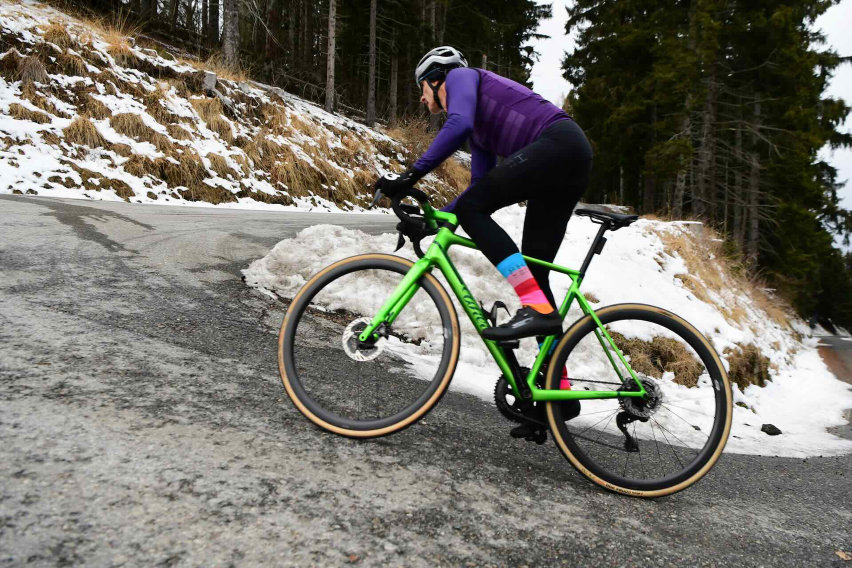
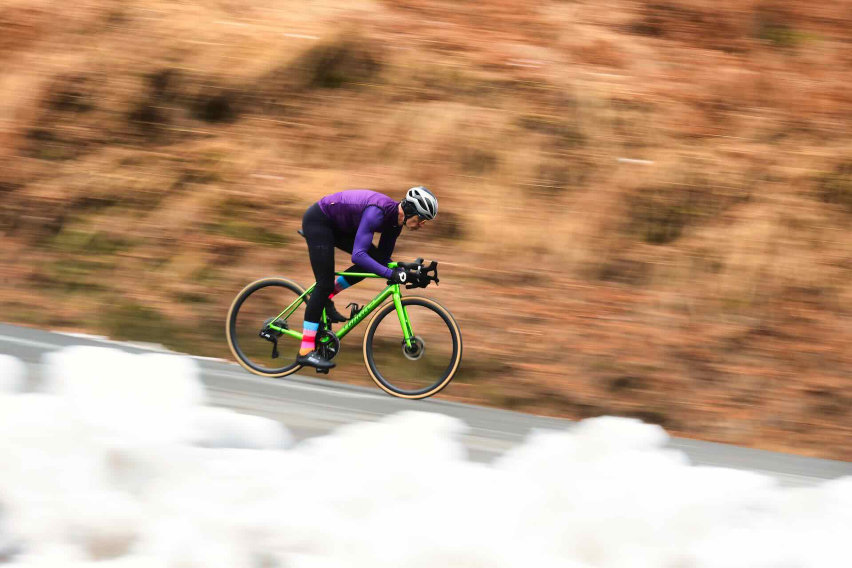
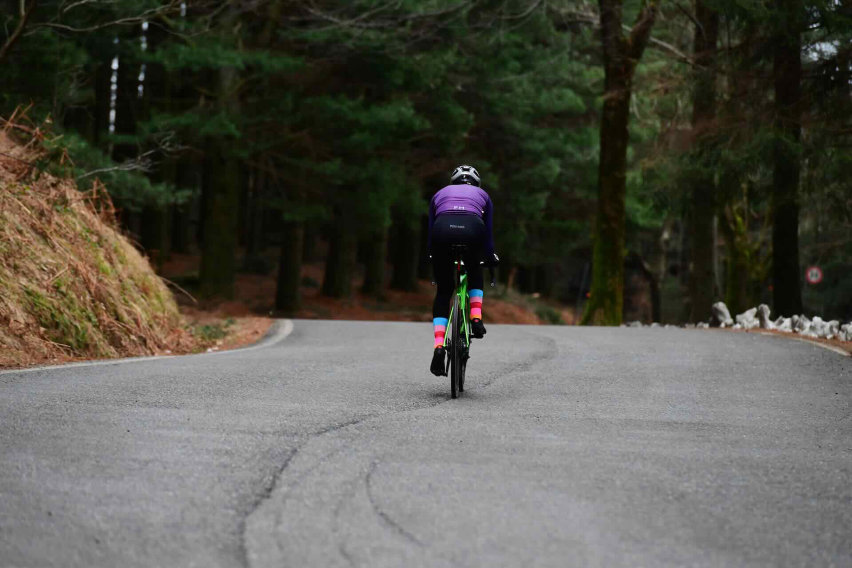
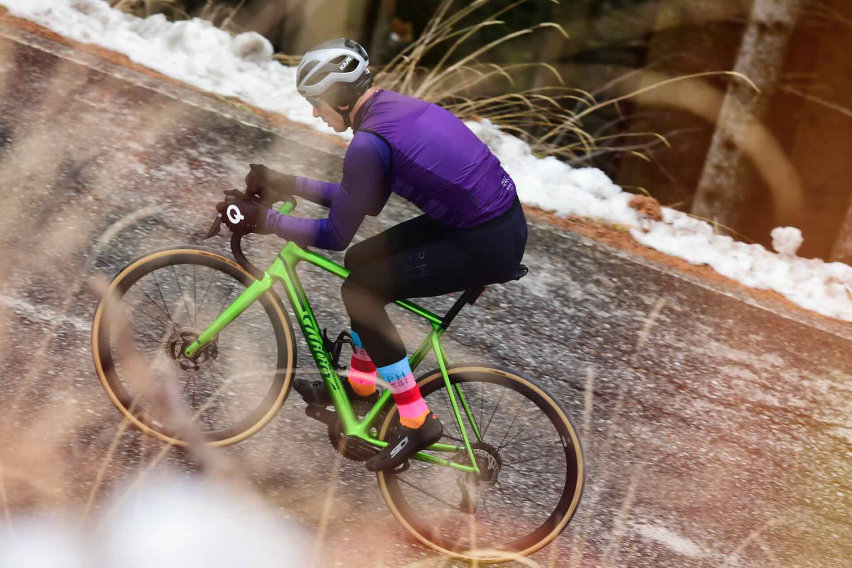
On our scales, with Look Keo Blade pedals, the Wilier Verticale SLR clocked in at 7 kg. A very interesting value, considering that Miche wheels dress Vittoria Corsa Pro 30 mm tubeless tires. As the geometries are aligned with the latest trends, the assembly includes 170 mm cranks even on a size M like the bike under test, equivalent to a size 54. But let’s get to the road sensations, gathered during a longer-than-normal test thanks to the Christmas vacations.
First impressions are sharp: the bike is snappy, ready in its response to the pedal stroke, both in relaunches and in accelerations from low speed, typical for example of a sprint uphill. It is, after all, the ideal terrain for enhancing the characteristics of the Verticale SLR, which can count, among other things, on the V Bar handlebar, undoubtedly one of the strengths of the design. It is effective because of a combination of factors: the design, narrower above and wider below (37-40 cm), allows the controls to be exploited in the standard position, without the need to rotate them inward, and at the same time to have a relatively wide low grip, such that it allows excellent control of the bike. Impressive is the rigidity of the V Bar, an absolute reference that, however, probably accomplices the 30 mm tubeless, does not translate into too dry a response on the arms in case of unevenness of the road surface. This helps elevate overall comfort, another of the design’s strengths, especially given the Verticale SLR’s clear racing vocation.
As far as performance is concerned, the scales, as mentioned, tip in favor of climbing, and so it is clear that this is not the ideal bike for amateur circuit racing on the flat. In many intermediate situations, however, the Wilier exhibits excellent versatility, understood as the ability to adapt to different situations of use. On my standard test route, up and down Lake Como, the Verticale SLR proved more than competitive both on fast transfers, such as the classic Como-Menaggio section, and on beaten climbs such as the Schignano climb from Argegno or the long ascent from Cernobbio to Mount Bisbino, in the latter case making the descent on pothole-destroyed asphalt much more accessible.
Changing wheelset
To get an even better understanding of how the Wilier Verticale SLR performs, I mounted for one outing the pair of wheels I know best, namely Lighweight Meilenstein T wheels, with 25 mm tubulars. The result? An exaggeration of the bike’s positive characteristics, in particular the ease of relaunching both on the flat and uphill, terrain where it can certainly play its cards against the best competitive offerings. A few critical elements do emerge, such as a vague tendency to lighten the wagon in sprints. On the downhill, the lighter, higher-performance wheels tend to reduce stability, especially on the fast, but at the same time make for quicker response in changes of direction, which is somewhat penalized by the 30 mm “big tyres”.
Chapter wheels, to stay on topic: the choice of the Miche Kleos RD 36 (2,200 euros list price) is consistent for the quality of the materials – Toray T1000/T700 carbon fiber rim, Ergal 7075 T6 hubs and Ceramic Speed bearings – and partly for the weight, around 1,400 grams (declared 1,390 grams, to which 20 grams should be added for tubeless ready taping). This is a wheel that does not have aerodynamics as its strong point, but then again, the bike is explicitly dedicated to climbing. These are less scenic wheels than the ambitions of a 12,000-plus bike. And I would have preferred 28 mm covers, to further reduce weight and increase versatility.
In conclusion, the Wilier Verticale SLR confirms and reaffirms the Italian company’s willingness to have its say in the context of top-of-the-line bikes, those that go into the hands of World Tour professionals, in this case the Groupama FDJ riders. Especially in the Hulk Green coloration under test it attracts the eyes of many, thanks also to really well-finished finishes. The materials used are first-rate, the geometries are modern without being extreme, and the full Shimano Dura-Ace groupset assembly is a guarantee of reliability and lightness. Competition in this price range is fierce, but the Verticale SLR has all the numbers to make inroads into the hearts of amateurs.
For more infos, wilier.com
Data sheet
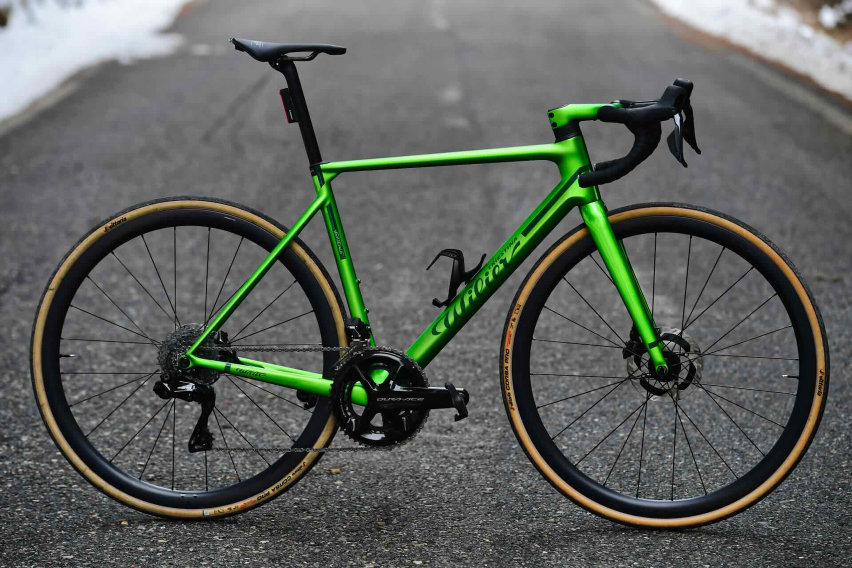
Wilier Verticale SLR
- Frame: Verticale SLR, carbon fiber monocoque Toray T800+T1100 M46JB
- Fork: Verticale SLR, carbon fiber monocoque Toray T800+T1100 M46JB
- Groupset: Shimano Dura-Ace Di2, 2x12V, 50×34 crankset, 11-30 cassette
- Cockpit: integrated V Bar, carbon fiber with Garmin/Wahoo attachment
- Wheelset: Miche Kleos RD 36 Carbon, 36mm profile, Ceramicspeed bearings
- Tyres: Vittoria Corsa PRO, 700×30 mm
- Weight (detected): 7.0 kg with Look Keo Blade pedals
- Price: 13,000 euros (5,800 euros frame kit, with handlebars and seatpost)
Geometry (size M)
- Stack: 541 mm
- Reach: 387 mm
- Seatstays: 408 mm
- Wheelbase: 990 mm
- Seat angle: 74°
- Steerer angle: 72°
- Sizes: XS, S, M, L, XL, XXL
Apparel
- Jersey: PH Apparel
- Vest: PH Apparel
- Bibs: PH Apparel
- Helmet: Kask Elemento
- Eyewear: KOO Demos
- Shoes: Sidi Sixty
